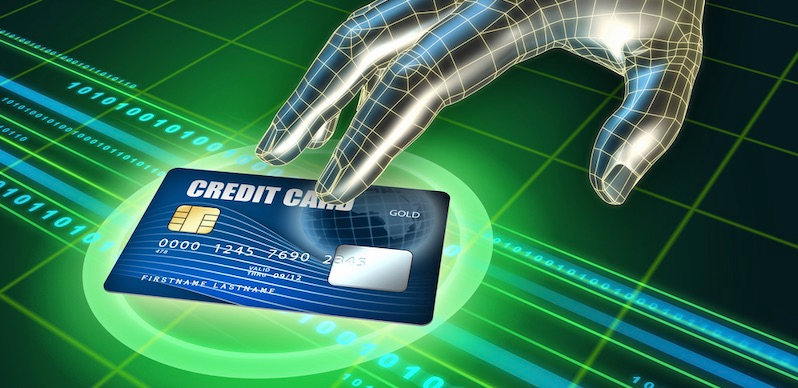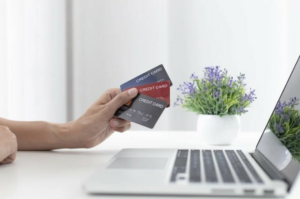
In today’s digital era, credit cards have become indispensable tools for everyday transactions, offering convenience and flexibility. However, with the rise of online shopping and electronic payments, credit card fraud has also become increasingly prevalent. From identity theft to unauthorized transactions, credit card fraud can wreak havoc on your finances and credit score. In this comprehensive guide, we’ll explore effective strategies for protecting your credit card against fraud and safeguarding your financial well-being.
Understanding Credit Card Fraud
Credit card fraud occurs when unauthorized individuals gain access to your credit card information and use it to make fraudulent purchases or transactions. This can happen through a variety of means, including phishing scams, data breaches, card and wallet skimming devices, or stolen purses. Fraudsters can use your credit card information to make online purchases, withdraw cash advances, or even open new accounts in your name, causing financial losses and damaging your credit reputation.
How to protect your credit card against fraud
Monitor your account activity: Regularly review your credit card statements and transaction history for unauthorized charges or suspicious activity. Immediately report any discrepancies to your credit card issuer to investigate and resolve the issue promptly.
Enable transaction alerts: Most credit card issuers offer transaction alerts via email or text message, notifying you of any transactions made with your card in real time. Activate these alerts to stay informed about your card activity and detect fraudulent transactions early.
Protect your physical card
Keep your credit card in a safe place, such as a wallet or card holder, when not in use. Avoid leaving your card unattended or lending it to others, as this increases the risk of theft or unauthorized use.
Sign your card
As soon as you receive a new credit card, sign the back of the card with a permanent marker. A signed card provides an additional layer of verification and makes it more difficult for fraudsters to use your card if it is lost or stolen.
Protect your personal information
Be careful when sharing your credit card information, especially online or over the phone. Only provide your card details on secure websites with HTTPS encryption and avoid sharing sensitive information via email or text message.
Beware of phishing scams
Be aware of phishing scams, where fraudsters try to trick you into revealing your personal or financial information. Avoid clicking on suspicious links or responding to unsolicited emails, calls or texts asking for your credit card details.
Use secure payment methods
When shopping online, use secure payment methods such as credit cards with built-in fraud protection or digital wallets like Apple Pay or Google Pay. These payment methods encrypt your card information and provide an additional layer of security.
Check for card cloning devices
Before using an ATM or card reader, inspect the card slot for signs of tampering or card skimming devices. If you notice anything suspicious, avoid using the machine and report it to the competent authorities or establishments.
Set strong passwords
If you have online accounts associated with your credit card, such as bank or shopping accounts, be sure to use strong, unique passwords for each account. Avoid using easy-to-guess passwords or sharing them with others.
Protect your devices
Keep your computer, smartphone and other devices safe by installing antivirus software, firewall protection and regular software updates. Avoid accessing sensitive information or making online purchases on public Wi-Fi networks as they may not be secure.
Use two-factor authentication
Enable two-factor authentication (2FA) on your online accounts whenever possible, including your credit card issuer’s website. 2FA adds an extra layer of security by requiring a second form of verification, such as a code sent to your mobile device, to access your account.
Be careful with public Wi-Fi networks

avoid shopping online or accessing sensitive information while connected to public Wi-Fi networks, such as coffee shops, airports, or hotels. Public Wi-Fi networks can be vulnerable to hackers, putting your credit card information at risk.
Regularly update contact information
Make sure your credit card issuer has up-to-date contact information, including your email address and phone number. This allows them to quickly contact you in case of suspicious activity or to verify transactions.
Destroy confidential documents
Discard old credit card statements, receipts and other documents that contain personal or financial information by destroying them before discarding them. This prevents fraudsters from accessing your sensitive information through recycle bins or rummaging through trash.
Be cautious on social media
Be careful when sharing personal information on social media platforms, as fraudsters can use this information to steal your identity or target you with phishing scams. Avoid publicly posting details such as your full name, address, date of birth or card details.
Report lost or stolen cards immediately
If your credit card is lost or stolen, inform your credit card issuer immediately so that the card can be deactivated and prevent unauthorized use. Most issuers offer 24/7 customer service and emergency assistance for lost or stolen cards.
Choose chip cards
Use credit cards with EMV chip technology, which offers greater security and protection against counterfeit fraud. Chip cards generate unique transaction codes for each purchase, making them more secure than traditional magnetic stripe cards.
Be skeptical of unsolicited offers
Be wary of unsolicited offers, promotions, or requests for personal information, especially if they seem too good to be true. Fraudsters often use these tactics to trick victims into providing confidential information or falling for scams.
Regularly review your credit report
Monitor your credit report regularly for unauthorized accounts or suspicious activity that could indicate identity theft or fraud. You are entitled to one free credit report from each of the three major credit bureaus – Equifax, Experian and TransUnion – every 12 months.
Consider Credit Monitoring Services
Consider signing up for a credit monitoring service that provides real-time alerts and continuous monitoring of your credit report for any changes or suspicious activity. These services can help you quickly detect and respond to fraud, minimizing potential damage to your credit.
Conclusion
Protecting your credit card from fraud requires vigilance, caution and proactive measures to protect your financial information and identity. By following the strategies outlined in this guide, you can minimize your risk of credit card fraud and protect yourself against unauthorized transactions, identity theft, and financial loss. Remember to stay informed on the latest fraud trends and security best practices, and always prioritize the security of your credit card information in all of your financial transactions. With the right precautions, you can enjoy the convenience and benefits of using a credit card while keeping your finances safe and secure.


